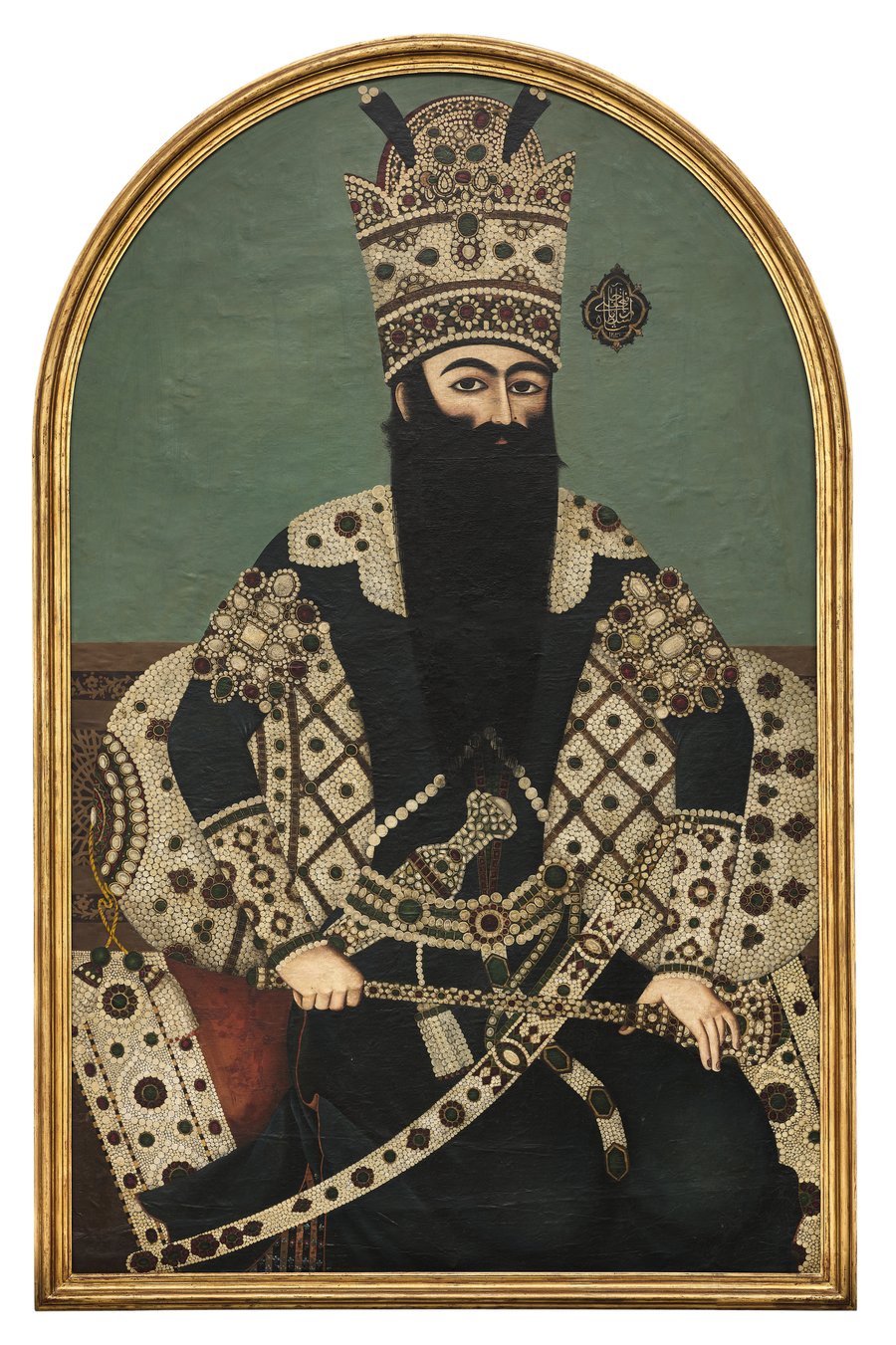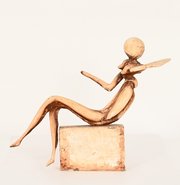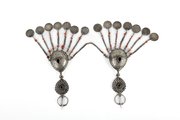
Portrait of Fath 'Ali Shah Qajar
Museum of Islamic Art
- Title:
- Portrait of Fath 'Ali Shah Qajar
- Artist:
- Mihr 'Ali
- Production place:
- Iran
- Date:
- 1816
- Period:
- Qajar
- Title:
- Portrait of Fath 'Ali Shah Qajar
- Artist:
- Mihr 'Ali
- Production place:
- Iran
- Date:
- 1816
- Period:
- Qajar
- Material:
- Oil paint, Canvas
- Technique:
- Painting
- Dimensions:
- 162 × 110 cm
Monumental royal painting from the early Qajar era merges in original ways the ancient, pre-Islamic Iranian tradition of large-scale idealised portraits of the king with the Western-imported technique of oil painting, progressively introduced at court during in the late Safavid and in the Zandi periods, as in the case of this official portrait of Fath 'Ali Shah, second ruler of the Qajar dynasty. During his reign (1212-1250 AH/1797-1834 CE) Iran and the world underwent great changes, and this is reflected also in the art produced during this period. The shah is depicted wearing a heavily bejewelled parure and a feathered crown encrusted with precious stones and pearls. He is sitting on the floor, resting on a rug with pearl bordure, his back supported by a large bolster embroidered with pearls. In his hands, Fath 'Ali Shah holds a ceremonial mace and, on his lap, rests a bejewelled sword, a symbol of power and authority that regularly features in his portraits. This painting has been attributed to the court painter Mihr 'Ali, one of the most prominent painters of his time and a favourite by Fath 'Ali Shah. His royal portraits capture not only the grandeur and the majesty of the shah and his court; they were also instrumental in conveying precise messages to their onlookers and so used as political tools. In fact, the portraits of Fath 'Ali Shah were mainly produced to be sent abroad as gifts to ambassadors, foreign monarchs, and governments to show the wealth and power of the Persian crown and its people in a period during which Iran became a major political target of the expansionist plans of European nations such as Britain, France, and tsarist Russia.
A relatively small number of large royal portraits of Fath 'Ali Shah are preserved in Western public institutions, the majority being still in Iran or in private collections. For long neglected by historians of Islamic Art, since a couple of decades Qajar art and, in particular, painting have stirred new interest, gaining popularity through the work of scholars and the practices of contemporary Iranian artists. Its rediscovery has shed new light onto a complex historical period, during which Iran entered the global arena of modernity.



